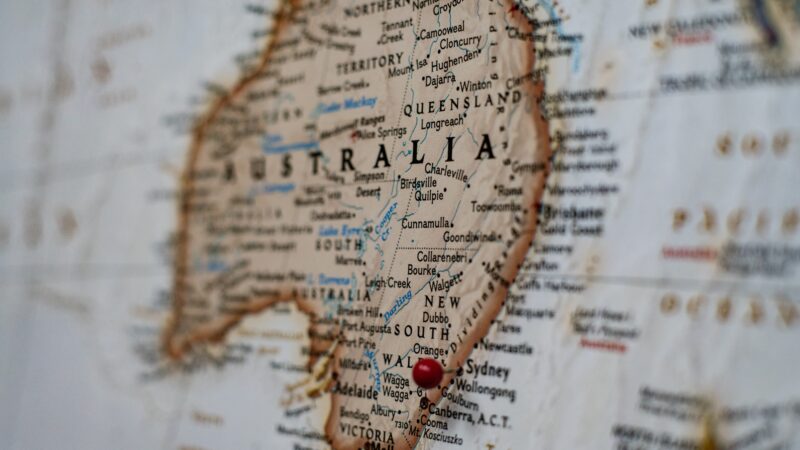The founders of countries occupy a unique position within modern society. They are often viewed either as heroic and mythical figures or deeply problematic by today’s standards – take the obvious examples of George Washington. Long-held up by all Americans as a man unrivalled in his courage and military strategy, he is now a figure of vilification by leftists, who are eager to point out his ownership of slaves.
Whilst many such figures face similar shaming nowadays, none are suffering complete erasure from their own society. That is the fate currently facing Mustafa Kemal Atatürk, whose era-defining liberal reforms and state secularism now pose a threat to Turkey’s authoritarian president, Recep Tayyip Erdoğan.
To understand the magnitude of Atatürk’s legacy, we must understand his ascent from soldier to president. For that, we must go back to the end of World War One, and Turkey’s founding.
The Ottoman Empire officially ended hostilities with the Allied Powers via the Armistice of Mudros (1918), which amongst other things, completely demobilised the Ottoman army. Following this, British, French, Italian and Greek forces arrived in and occupied Constantinople, the Empire’s capital. Thus began the partitioning of the Ottoman Empire: having existed since 1299, the Treaty of Sèvres (1920) ceded large amounts of territory to the occupying nations, primarily being between France and Great Britain.
Enter Mustafa Kemal, known years later as Atatürk. An Ottoman Major General and fervent anti-monarchist, he and his revolutionary organisation (the Committee of Union and Progress) were greatly angered by Sèvres, which partitioned portions of Anatolia, a peninsula that makes up the majority of modern-day Turkey. In response, they formed a revolutionary government in Ankara, led by Kemal.
Thus, the Turkish National Movement fought a 4-year long war against the invaders, eventually pushing back the Greeks in the West, Armenians in the East and French in the South. Following a threat by Kemal to invade Constantinople, the Allies agreed to peace, with the Treaty of Kars (1921) establishing borders, and Lausanne (1923) officially settling the conflict. Finally free from fighting, Turkey declared itself a republic on 29 October 1923, with Mustafa Kemal as president.
His rule of Turkey began with a radically different set of ideological principles to the Ottoman Empire – life under a Sultan had been overtly religious, socially conservative and multi-ethnic. By contrast, Kemalism was best represented by the Six Arrows: Republicanism, Populism, Nationalism, Laicism, Statism and Reformism. Let’s consider the four most significant.
We’ll begin with Laicism. Believing Islam’s presence in society to have been impeding national progress, Atatürk set about fundamentally changing the role religion played both politically and societally. The Caliph, who was believed to be the spiritual successor to the Prophet Muhammad, was deposed. In their place came the office of the Directorate of Religious Affairs, or Diyanet – through its control of all Turkey’s mosques and religious education, it ensured Islam’s subservience to the State.
Under a new penal code, all religious schools and courts were closed, and the wearing of headscarves was banned for public workers. However, the real nail in the coffin came in 1928: that was when an amendment to the Constitution removed the provision declaring that the “Religion of the State is Islam”.
Moving onto Nationalism. With its roots in the social contract theories of thinkers like Jean-Jacques Rousseau, Kemalist nationalism defined the social contract as its “highest ideal” following the Empire’s collapse – a key example of the failures of a multi-ethnic and multi-cultural state.
The 1930s saw the Kemalist definition of nationality integrated into the Constitution, legally defining every citizen as a Turk, regardless of religion or ethnicity. Despite this however, Atatürk fiercely pursed a policy of forced cultural conformity (Turkification), similar to that of the Russian Tsars in the previous century. Both regimes had the same aim – the creation and survival of a homogenous and unified country. As such, non-Turks were pressured into speaking Turkish publicly, and those with minority surnames had to change, to ‘Turkify’ them.
Now Reformism. A staunch believer in both education and equal opportunity, Atatürk made primary education free and compulsory, for both boys and girls. Alongside this came the opening of thousands of new schools across the country. Their results are undeniable: between 1923 – 38, the number of students attending primary school increased by 224%, and 12.5 times for middle school.
Staying true to his identity as an equal opportunist, Atatürk enacted monumentally progressive reforms in the area of women’s rights. For example, 1926 saw a new civil code, and with it came equal rights for women concerning inheritance and divorce. In many of these gender reforms, Turkey was well-ahead of other Western nations: Turkish women gained the vote in 1930, followed by universal suffrage in 1934. By comparison, France passed universal suffrage in 1945, Canada in 1960 and Australia in 1967. Fundamentally, Atatürk didn’t see Turkey truly modernising whilst Ottoman gender segregation persisted
Lastly, let’s look at Statism. As both president and the leader of the People’s Republican Party, Atatürk was essentially unquestioned in his control of the State. However, despite his dictatorial tendencies (primarily purging political enemies), he was firmly opposed to dynastic rule, like had been the case with the Ottomans.
But under Recep Tayyip Erdoğan, all of this could soon be gone.
Having been a high-profile political figure for 20 years, Erdoğan has cultivated a positive image domestically, one focused on his support for public religion and Turkish nationalism, whilst internationally, he’s received far more negative attention focused on his growing authoritarian behaviour. Regarded widely by historians as the very antithesis of Atatürk, Erdoğan’s pushback against state secularism is perhaps the most significant attack on the founder’s legacy.
This has been most clearly displayed within the education system. 2017 saw a radical shift in school curriculums across Turkey, with references to Charles Darwin’s theory of evolution being greatly reduced. Meanwhile, the number of religious schools has increased exponentially, promoting Erdoğan’s professed goal of raising a “pious generation of Turks”. Additionally, the Diyanet under Erdoğan has seen a huge increase in its budget, and with the launch of Diyanet TV in 2012, has spread Quranic education to early ages and boarding schools.
The State has roles to play in society but depriving schoolchildren of vital scientific information and funding religious indoctrination is beyond outrageous: Soner Cagaptay, author of The New Sultan: Erdoğan and the Crisis of Modern Turkey, referred to the changes as: “a revolution to alter public education to assure that a conservative, religious view of the world prevails”.
There are other warning signs more broadly, however. The past 20 years have seen the headscarf make a gradual reappearance back into Turkish life, with Erdoğan having first campaigned on the issue back in 2007, during his first run for the presidency. Furthermore, Erdoğan’s Justice and Development Party (AKP), with its strong base of support amongst extremely orthodox Muslims, has faced repeated accusations of being an Islamist party – as per the constitution, no party can “claim that it represents a form of religious belief”.
Turkish women, despite being granted legal equality by Atatürk, remain the regular victims of sexual harassment, employment discrimination and honour killings. Seemingly intent on destroying all the positive achievements of the founder, Erdoğan withdrew from the Istanbul Convention (which forces parties to investigate, punish and crackdown on violence against women) in March 2021.
All of these reversals of Atatürk’s policies reflect the larger-scale attempt to delete him from Turkey’s history. His image is now a rarity in school textbooks, at national events, and on statues; his role in Turkey’s founding has been criminally downplayed.
President Erdoğan presents an unambiguous threat to the freedoms of the Turkish people, through both his ultra-Islamic policies and authoritarian manner of governance. Unlike Atatürk, Erdoğan seemingly has no problems with ruling as an immortal dictator, and would undoubtedly love to establish a family dynasty. With no one willing to challenge him, he appears to be dismantling Atatürk’s reforms one law at a time, reducing the once-mythical Six Arrows of Kemalism down to a footnote in textbooks.
A man often absent from the school curriculums of Western history departments, Mustafa Kemal Atatürk proved one of the most consequential leaders in both Turkish history, and the 20th Century. A radical and a revolutionary he may have been, but it was largely down to him that the Turkish people received a recognised nation-state, in which state secularism, high-quality education and equal civil rights were the norm.
In our modern world, so many of our national figures now face open vilification from the public and politicians alike. But for Turkey, future generations may grow up not even knowing the name or face of their George Washington. Whilst several political parties and civil society groups are pushing back against this anti-Atatürk agenda, the sheer determination displayed by Erdoğan shows how far Turks must yet go to preserve the founder’s legacy.



